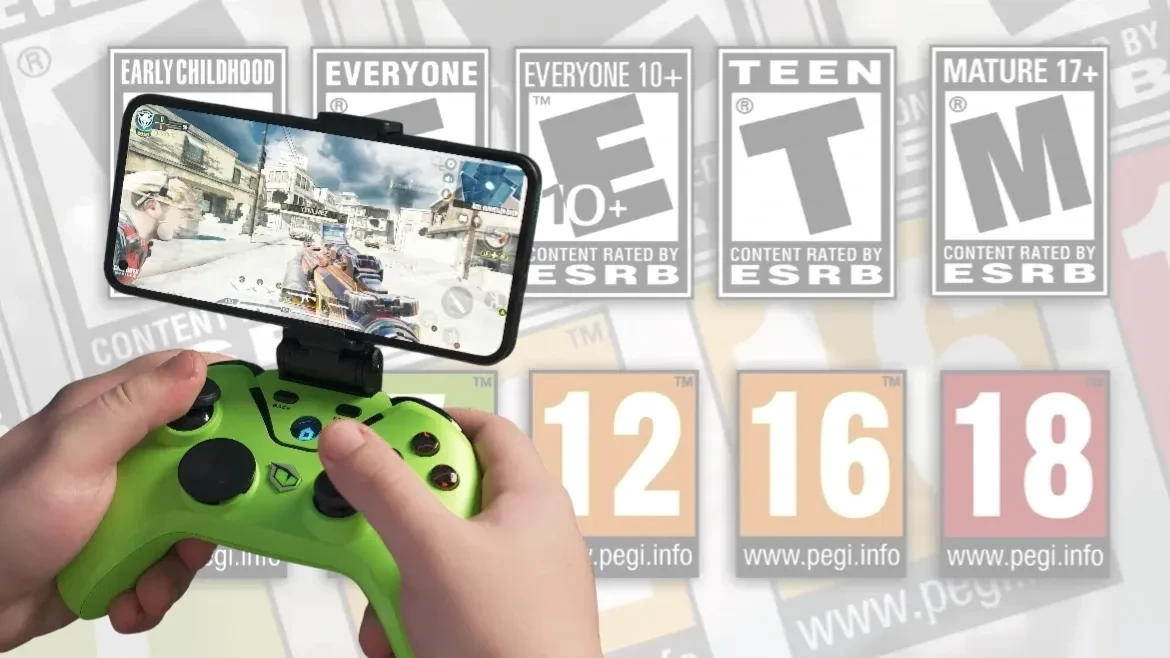
ESRB & PEGI: Complete Guide to Mobile Game Age Ratings
In the ever-evolving landscape of mobile gaming, age ratings play a crucial role in guiding both parents and gamers. ESRB and PEGI are internationally recognized standards for rating video game content, ensuring that players engage with games appropriate for their age group. These video game ratings help parents make informed choices about the games their children play, fostering a safer and more enjoyable gaming experience for all.
How Age Ratings Came to Be
The establishment of age rating systems in mobile games stems from a history marked by growing concerns over game content and its impact on players, especially minors. In the late 1990s, widespread debate over violent and mature content in video games led to the creation of formalized rating bodies. The ESRB (Entertainment Software Rating Board) was launched in North America in 1994, while PEGI (Pan European Game Information) was introduced in Europe in 2003. These systems were developed to provide clear guidelines and help consumers, particularly parents, navigate the vast array of available games safely.
The Main Age Rating Systems for Mobile Games
PEGI – For Europe
PEGI is the primary age rating system used across Europe. It categorizes games based on content suitability, ensuring that mobile games are appropriate for different age groups.
Example of PEGI rating categories:
PEGI 3: Suitable for all age groups, indicating that the game contains minimal or no objectionable content.
PEGI 18: Reserved for adults only, denoting that the game includes content unsuitable for younger audiences, such as explicit violence or strong language.
ESRB – For the United States, Mexico, and Canada
The ESRB oversees age ratings in North America, providing detailed classifications to help consumers understand game content.
Example of ESRB rating categories:
ESRB E (Everyone): Indicates that the game is suitable for players of all ages, with content that is generally family-friendly.
ESRB M (Mature): Designed for players aged 17 and older, this rating signifies the presence of mature content like intense violence, strong language, or suggestive themes.
PEGI vs ESRB – What’s the Difference?
Geographic Coverage
PEGI operates primarily in European countries, while ESRB covers the United States, Mexico, and Canada. Understanding both systems is essential for gamers who access international mobile game markets.
Approaches to Content Evaluation
Both PEGI and ESRB assess game content based on factors like violence, language, and sexual content. However, their criteria and emphasis may vary slightly, reflecting cultural differences in content sensitivity.
Differences in Age Categories and Labeling
While both systems aim to protect younger audiences, their age categories differ. For example, PEGI 12 allows for mild violence and some scary elements, whereas ESRB T (Teen) permits similar content but under a different classification.
Visual Differences in Rating Icons
The rating icons for PEGI and ESRB differ. PEGI uses a square or rectangular logo with the age number in the center, while ESRB features a black-and-white rectangular label with a large rating letter and a text description beneath it.
Importance of Understanding Both Systems
Even if you primarily play games in one region, being aware of both PEGI and ESRB ratings enhances your ability to make informed decisions, especially when accessing a global market where games may carry either or both ratings.
Why Combine Age Ratings with Parental Controls
Age ratings provide a foundational layer of protection, but additional safeguards are necessary to address hidden risks in mobile games, such as intrusive ads, in-game chats, and unauthorized purchases. Combining these ratings with parental controls offers a more comprehensive safety net.
For instance, using the Kroha parental control app, parents can remotely block specific games or applications on their child’s smartphone. Additionally, Kroha allows for scheduling restrictions, such as disabling access to mobile games during school hours or late at night, ensuring that children focus on their studies and maintain healthy sleep patterns.
Implementing both video game ratings and parental control tools effectively mitigates potential risks, providing a safer online environment for children.
Where to Find Full Guides
For a deeper understanding of each rating system, explore our comprehensive guides:
Learn how to check a game’s age rating on platforms like Google Play and the App Store, and ensure your child’s gaming experience remains both enjoyable and secure.
By familiarizing yourself with international video game rating systems like ESRB and PEGI, and leveraging tools such as the Kroha parental control app, you can confidently navigate the mobile gaming world. Whether you're a parent, guardian, or avid gamer, staying informed about video game ratings and implementing appropriate safeguards is essential for a safe and responsible gaming journey.
Recent articles
Garten of Banban: Is This Game Safe for Kids?
In the ever-evolving landscape of video games, titles like Garten of Banban have captured the attention of younger audiences worldwide. While its engaging gameplay and colorful graphics make it popular among children, concerns about its safety persist. This article delves into why Garten of Banban appeals to children and evaluates whether it is safe for them to play.
PEAK Game: A Parent’s Guide to Content and Child Suitability
In today’s digital age, video games have become a significant part of children’s lives, offering both entertainment and educational value. However, with the vast array of games available, parents often find themselves questioning which titles are appropriate for their children. One such game making waves in the gaming community is PEAK. This article aims to provide parents with a comprehensive guide to the game and help evaluate whether it is safe and appropriate for children.

